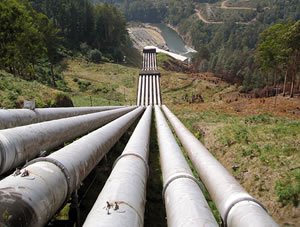- 1 read

When it comes to sustainability, not all renewable energy technologies are equal. A widely accepted 1987 report convened by the United Nations states that in order to be sustainable, a process must “meet the needs of the present without compromising the ability of future generations to meet their own needs.”
The abundance of solar, hydro, and wind resources available for renewable energy conversion make fossil fuel reserves seem miniscule and redundant. There is enough solar radiation, falling water, and wind to produce many times the amount of electricity required to power every aspect of human life on this earth with currently available technology (not to mention the resources of debatably renewable biomass and the potential of hydrogen and fusion technologies). So the environmental sustainability is generally (but not absolutely) proven. The current problem with the sustainability of renewable energy sources is their economic sustainability and their ability to meet the current need for electricity generation.
In the process of deploying these renewable technologies it has become necessary to measure their economic, environmental, and social viability. One approach is to give individual technologies scores on a sustainability scale which considers the positive and negative impacts of a technology over its entire life cycle and its ability to meet demand for electricity generation. For example a life cycle analysis of solar photovoltaic technologies would account for the carbon released during the process of collecting silicon for its panels as well as the land use requirements for an enormous array of solar cells.
The concrete required for large scale hydropower facilities also has a significant level of embodied carbon emissions and the creation of large upstream reservoirs can lead to serious human and ecological displacement. Wind turbines are a threat to migratory birds and have experienced significant opposition from residents who believe they decrease local property values. The analysis is complex and generally has to be done on a case by case basis. A solar photovoltaic installation would receive a significantly different sustainability score if it were installed in Tucson or installed in Philadelphia, for example.
It seems to be a foregone conclusion that in the future renewable technologies will replace fossil fuels as our primary source of electric power generation. Since we are attempting to replace a significant amount of current fossil fuel generation it is important to make sure that we aren’t replacing carbon emissions with some equally destructive but unforeseen product of a renewable process. There needs to be foresight in building the next generation of sustainable energy.
GREENandSAVE.com is a free resource for anyone that wants to save energy, money, and the environment. The articles, product reviews, online tools, and return on investment calculations are researched from a diverse range of public and private sector sources. Overall, the company is passionate about saving money as well as creating healthy homes, offices, and lifestyles.
For more information on renewable energy, and the types that can make your home more sustainable, check out GREENandSAVE.com’s Home Remodeling Tips. Or for a better idea of which improvements to your home will save you the most money the fastest, take a look at GREENandSAVE’s Return on Investment Table for your next Home Remodeling project.

